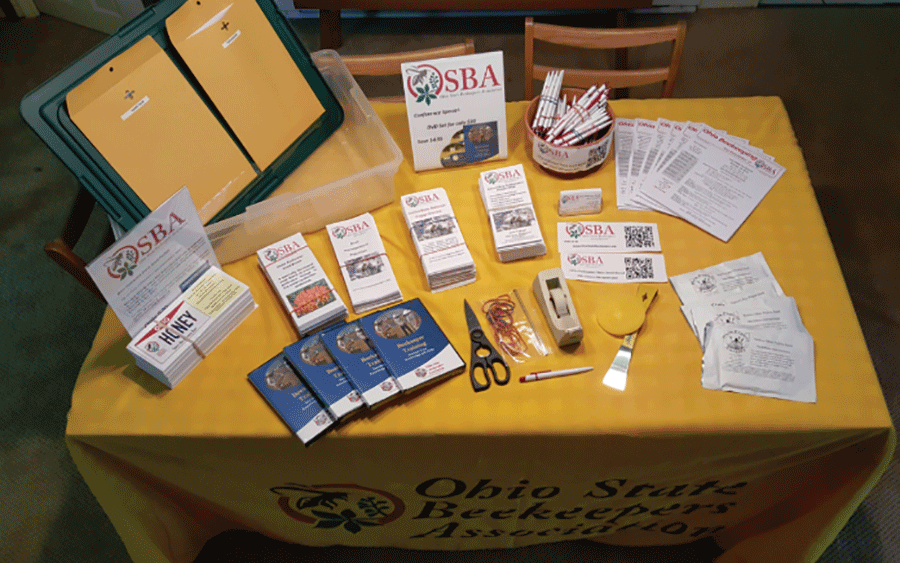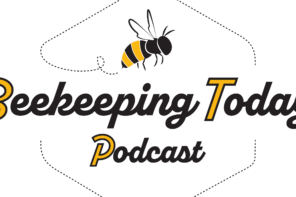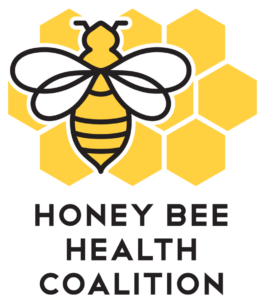By: Terry Lieberman-Smith
When standing at a club table at a fair, talking about honey bees and beekeeping, your volunteer will receive the full attention, and awe, from the general public.
Congratulations on becoming part of your club’s new executive board. Everything is buzzing right along, meetings 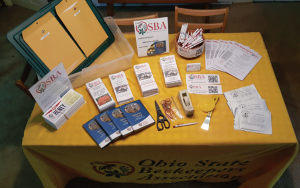 are running well, attendance is growing, and conversations are long and loud. Your association is receiving requests to participate at upcoming community fairs, events, and maybe even local food conferences. When you announce these volunteer opportunities at club meetings, suddenly the mood in the room changes, no one is willing to make eye contact, and no hands are raised to volunteer. What just happened? No one wants to support the club? Does this mean that your club won’t be represented at upcoming events? Not necessarily. You just need some new tools to reinvigorate the volunteerism that resides in all of us, by keeping in mind some key factors.
are running well, attendance is growing, and conversations are long and loud. Your association is receiving requests to participate at upcoming community fairs, events, and maybe even local food conferences. When you announce these volunteer opportunities at club meetings, suddenly the mood in the room changes, no one is willing to make eye contact, and no hands are raised to volunteer. What just happened? No one wants to support the club? Does this mean that your club won’t be represented at upcoming events? Not necessarily. You just need some new tools to reinvigorate the volunteerism that resides in all of us, by keeping in mind some key factors.
When people feel vested, appreciated and at ease, they are willing to give up time from their over-booked, over-tasked schedules. As club leaders, we need to adjust our mindset – just like the bygone good old days of leaving the hive out on the Back 40 and expecting it to live forever, the old days of passing around a sign up sheet and having it magically filled, or a successfully filled out sign-up sheet on a table are also bygone remnants of a different generation. Because time is a limited resource, you need to provide members the positive trade-off of their time to assist the club activity. So what are some reasons that would encourage people to enthusiastically give up their limited resource for the club?
People volunteer for a variety of reasons. One main motive is the need for the recognition that they may not get at 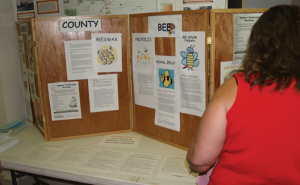 home or at work. They need to know that by giving up their time there will be some show of appreciation for their effort. Club members also need to feel confident when they represent their association at an event.
home or at work. They need to know that by giving up their time there will be some show of appreciation for their effort. Club members also need to feel confident when they represent their association at an event.
Here are some great ways that you, as a board member, can help make the club successful by increasing volunteerism, and helping promote your group. The first step is to take the unknown out of the upcoming activity. Explain to your club members exactly what the event’s purpose, and what their activities will be during the event. All of us are more comfortable when venturing into a new activity with an easy-to-follow task list that gives us a sense of purpose and confidence. It’s just like a new recipe, clear instructions result in great outcomes. Hazy instructions lead to food that ends up in the trash. Why show up if you have no idea of the activity? Educated volunteers will not only feel confident, but they will also share their enthusiasm with other club members. Most people don’t receive recognition or satisfaction from their day job. However, by standing at a club table at a fair, talking about honey bees and beekeeping, your volunteer will receive the full attention, and awe, from the general public. That energy will translate to more interest about the club, contacts with those in the community who can partner with your organization, and a completely enthusiastic volunteer.
At all these events, provide your volunteers with everyone of the items they can use as props for talking points. You want volunteers making eye contact and talking with the public. The point is to have fun and talk about bees. The display table’s abundance of attractive looking talking points will help start the conversation. Give a beekeeper a clean hive tool or a freshly painted nuc body, and the conversation will continue for hours! No one wants to touch a piece of ancient, dirty brood comb.
Everything on the table should be considered a marketing tool; brochures with upcoming club events or past activities to boast about, maybe some logowear if you’d like to sell it, and even lots of pictures from club meetings. A few years ago a local club member volunteered his skills, and built an attractive large wooden trifold board that we use for a variety of purposes. The board is a great backdrop to shorter items on the table, plus we can change the display on the board to fit the need of the event.
Your table should not only be educational, but it should be attractive and draw passersby to the displays. A few items strewn haphazardly on the table will do nothing to invite conversation or motivate your volunteers. Your display needs to have lots of color, items with a variety of height, and clean beekeeping equipment for the general public to touch.
While many clubs have observation hives, those traveling bees can be a source of constant concern during hot outdoor events and trying to make sure that little hands don’t push the hive off the table. One way to circumvent this issue is to have an item like a training hive that Brushy Mountain Bee Supply sells, or to purchase the incredibly beautiful laminated photos through Mann Lake. I personally have a set of the Mann Lake laminated photos, and have inserted them into deep frames. They make great educational displays, and they almost always draw people to the table. Consider taping a QR code for your club’s website onto the side of the hive body or nuc that is displayed on your table. Just about everyone has a smart phone these days, so they can take a picture of your QR codes and visit your club’s website or Facebook page at a later date. There are many free QR code generators available on-line. Putting together the successful table for events can be very stressful, or it can be a piece of cake. Why run around last-minute trying to pull things together, when you can pre-plan and pre-prep, and drop your stress load.
Developing a “GO” box will help to take the stress and worry out of attending local fairs, festivals and conferences. So what exactly is a “GO” box? It’s everything your volunteers need to take with them for an event. Consider it a filled suitcase ready to leave for a last minute adventure. No muss, no fuss, everything is already set up. All you need to do is pick it up and “Go”.
Our state association has a GO box with 100 of each of our brochures, our table cover, a checklist inventory of 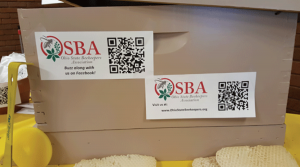 everything in the box, the DVDs that we sell, seed packets, a clay flower pot to display the seed packets for sale, signage for everything, pens, scotch tape, string, and envelope that has nametags, and name inserts for all of our board members, and a tally sheet of activity during the conference. The tally sheet keeps track of how many people visited the table, any ongoing issues that seem to be happening, any follow-up phone calls or e-mails that we need to send, and other notes that will help us at future events.
everything in the box, the DVDs that we sell, seed packets, a clay flower pot to display the seed packets for sale, signage for everything, pens, scotch tape, string, and envelope that has nametags, and name inserts for all of our board members, and a tally sheet of activity during the conference. The tally sheet keeps track of how many people visited the table, any ongoing issues that seem to be happening, any follow-up phone calls or e-mails that we need to send, and other notes that will help us at future events.
We also keep a quick sketch of how the table should look, so that we will have a consistent appearance no matter who sets it up. While we don’t carry an observation hive, for obvious reasons, we do have a traveling teaching nuc with frames containing pictures of hive activities. Everyone knows exactly what the final product (the table) should look like, and they know that everything they need will be on-hand to help make the event a success.
You might want to consider setting up your club’s display table during club meetings, so members are educated on how your club is represented at events. You might even ask for input from club members. Remember, you need to have people buy into the importance of attending community events. An attractive, well thought out table might even attract more volunteers.
Now you need to staff your table. Your board members should focus on individuals who are suited to the task, and personally invite them to participate at the upcoming event. While you may have some people say “no”, the majority of the selected members will feel as though you really care whether or not they participate and represent the club. Almost everybody has a “Pick Me” person inside of them just waiting for the opportunity to have someone make them feel important. To take a riff from the Nike slogan, “Just Ask”. Asking others for help may be a little out of your comfort zone, but it’s a needed skill that you can easily acquire through practice. The more people you ask the more “yes” answers you will receive and it will become easier to walk past the “no” responses, understanding that it’s nothing personal, it’s just not convenient at that time for that person to help out. People want to feel appreciated and just taking the time to ask will increase your percentage of “volunteering” club members.
Now that you have your group of enthusiastic volunteers, and your GO box ready at a moment’s notice, keep in mind that the follow-up is equally important. Have someone take pictures during the event for posting on the club’s website, Facebook page and newsletter. Insert a short article about the event, and a list of each volunteer’s name (spelled correctly), along with recognition at the next meeting. A round of applause for your volunteers will help ensure that the next time you need to ask for help, the “yes” will outweigh the “no”.
Looking forward to seeing your association table, staffed by enthusiastic volunteers, at all the upcoming Summer and Fall activities.







